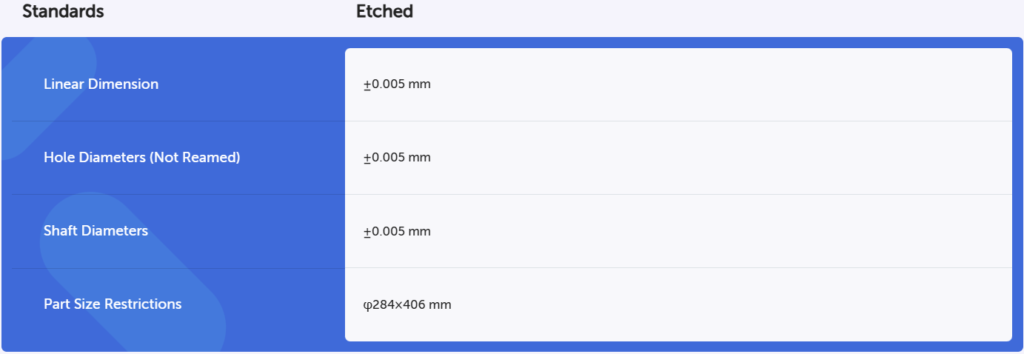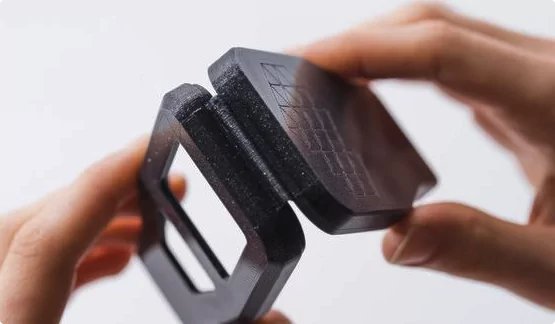
Focus on CNC precision parts processing
Get desired pattern with our efficient etching service like electronic housing, instrument panel, nameplate, etc. with tight tolerance. Get fast quote within 1 day.
➡50+ surface finishing
➡A great variety of metal materials available
➡Consistent and smooth etched surface for fine detail
Just upload your 2D drawings or 3D models and you will get quote feedback in 24 hours. Our specialized engineers will analyze your design to avoid misunderstanding, communicate with you and offer an affordable price.
The responsible and rigorous attitude towards materials, machining technique, surface finishing and CMM testing guarantee the consistent quality from prototyping to production parts. We won’t bother to check the parts quality before delivery.
The introduce of advanced 5 axis CNC machining centers and professional quoters ensure the fast lead time. We set the priority for the arrangement of the order according to the requirements and order complexity.
For the sake of your benefits, every customer will have technical support to get in touch with us from quotation to delivery. You will get fast feedback for any question until it’s confirmed that you receive the satisfied parts.

Distinguished Metal Etching Capabilities

Pengbo’s rapid prototype service bridges the gap between product concept and market during the product development. Advanced CNC machines such as Hermle 5 axis cnc milling centers, multiple international certifications, and top-notch CMM inspection ensure the accuracy and details of the prototype, meeting high standards of quality requirements.
➡Advanced Technology: CNC, CMM inspection, elite engineers etc.
➡Quick Response: full support to ensure problem solved.
➡Customized service: customize precision machining solutions

Pengbo’s on-demand production solution provides customers with a modern, efficient and customer-oriented production solution through its flexibility, high quality standards by our robust supply network and self-owned CNC shop, strict quality control inspection, etc.
➡Reasonable planning: precision resource allocation to ensure quick cycle time.
➡Machining SOP : advanced technology and strict QC processes.
➡Flexible Production: from rapid prototyping (1-20pcs) to low-volume production (20-1000pcs).
Wet Etching and Dry Etching are 2 different substractive manufacturing techniques applied to various fields such as semiconductor, microelectronics, and micromechanical systems (MEMS). Key differences as below:
Medium and Materials:
Control and Precision:
Application Areas:
Cost:
Explore more differences here.
